Giving Thanks All Year
One of my favorite holidays of the year…Thanksgiving!

One of my favorite holidays of the year…Thanksgiving!
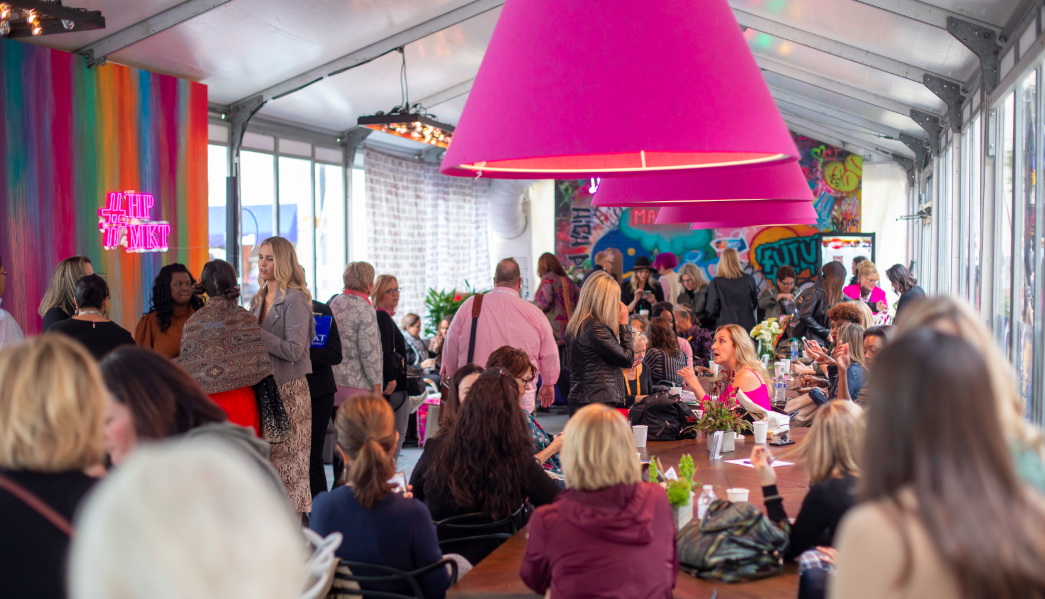
Any of you fortunate enough to have attended High Point Market this fall know what a special event it was. But even if you weren't in attendance, we've brought the best of the show here for you. We turned to High Point Market's Brand Ambassador, Deb Barrett, for a first-person report on market trends this year.
Deb first notes a lot of nature-inspired looks, silhouettes, textures and materials. “Definitely a softer, rounder, organic block, curved sofas, not a lot of straight lines,” says the noted trend strategist and design and market intelligence consultant. “Some of it's being driven by the millennial market, for sure,” including sustainable and green design that is affordable for designers. Also improved is the design esthetic to match the functionality.” 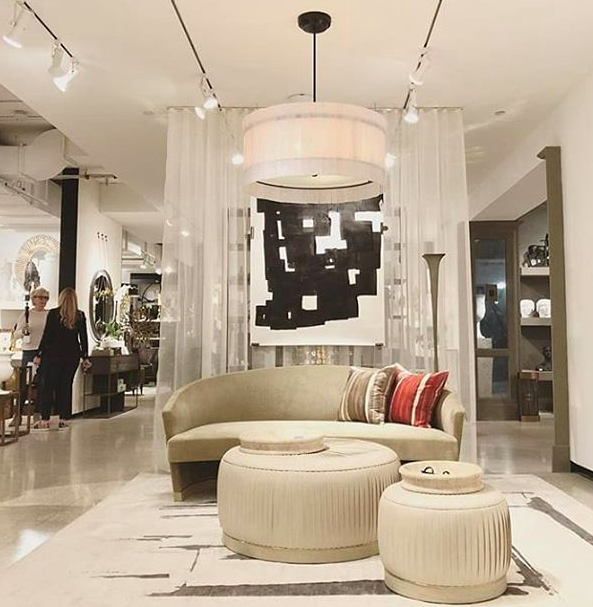
Driving interior design on a larger, global scale is health and wellness. “It's a lifestyle choice and part of the culture. Look what's happened in the mattress industry. No one thought they'd be buying mattresses the way that we are now. Tech came in and completely disrupted that whole product category. Along with that is the idea of the sleep revolution―bed linens, mattress, bed pillows, technical textiles, all of that stuff that leads into performance fabrics and upholstery.”
Part of the excitement of going to market is that every two or three markets you see someone that reinvents themselves, whether as a manufacturer or brand, and becomes all the talk of market, she says. - Room image Global Views at High Point Market-
“The talk of market was (New York designer) Sasha Bikoff, who hooked up with Versace and did an amazing exhibition in Milan (this spring). So Currey & Company went to her and wanted to have not only an Instagramable moment, but they wanted to be the talk of market. They kept it under wraps and opened it up on Friday. Everybody couldn't stop talking about it; it was amazing. And guess what? There were only prototypes of her line that's not coming out for another year.
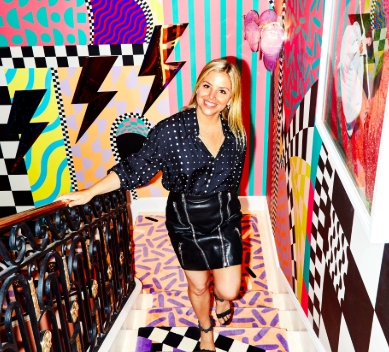 -image Sasha Bikoff-
-image Sasha Bikoff-
“So the whole idea was that shock and awe versus selling product. It was genius from a marketing standpoint. That's kind of what we're seeing is that influencers are becoming an important part of market.”
Also prevalent at market was more of what's being called the “new traditional” or “modern traditional.” Antiques are becoming more and more important, she says, as are one of a kind custom looks, which lends itself in traditional more than it does in modern. “So the modern contemporary manufacturers are reissuing archival things like Marcel Breuer looks or whatever. All manufacturers are going to their archives to see how history and the past can inform the present and the future.”
High Point Market highlighted the fact that the pendulum has swung to maximalism, the counterpoint to minimalism, and so there's more ornamentation, more pattern, more layering, more one-of-a-kind personal touch looks, which again traditional lends itself to, she says, citing curved furniture such as Queen Anne legs and Bombay chests.
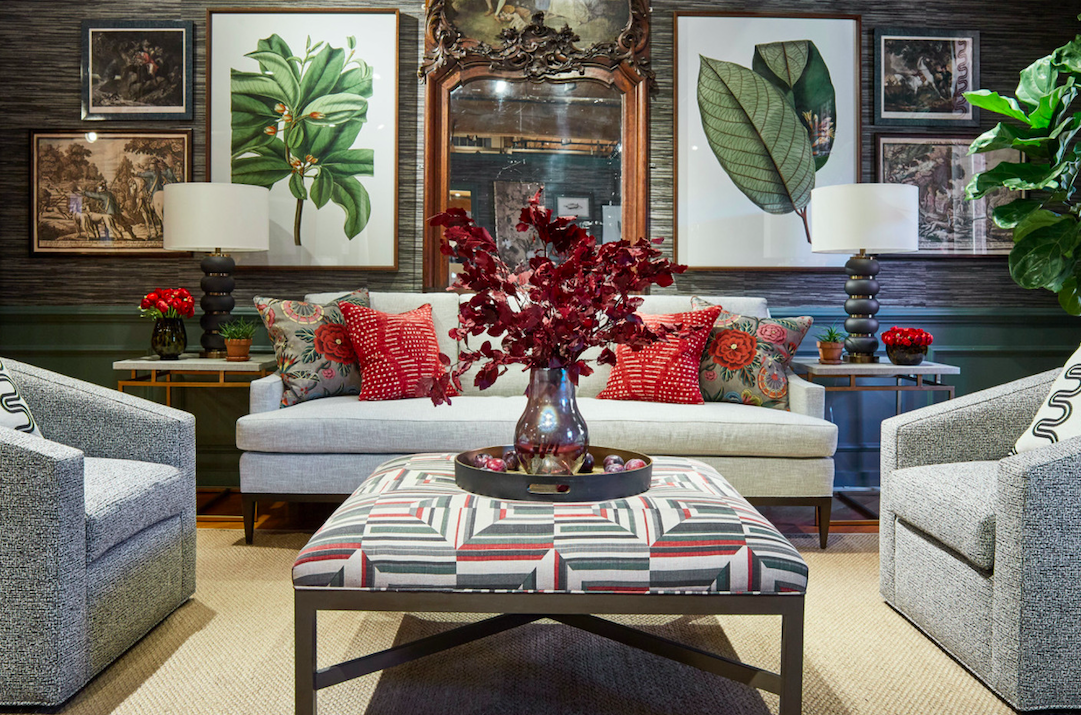
“One mega trend we talk about a lot is the personalization aspect,” Deb continues. “Customers want one-of-a-kind, unique, only made for me stuff. They're buying it like an art piece or an investment piece.”
-image Thibaut -
The demand is resulting in really interesting materials and mixed media, and lots of texture. “There's texture to the point of three-dimensional sculptured looks―cabinets, sideboard fronts with really interesting hardware, sort of brutalist, cubist, nature-inspired, rough grooved, you name it. The ongoing sustainable materials trend has sparked the return of caning, coastal looks of rattan and basketry, raw edges. Button tufting is out, replaced by tuck and roll and channel quilting is more prevalent.”
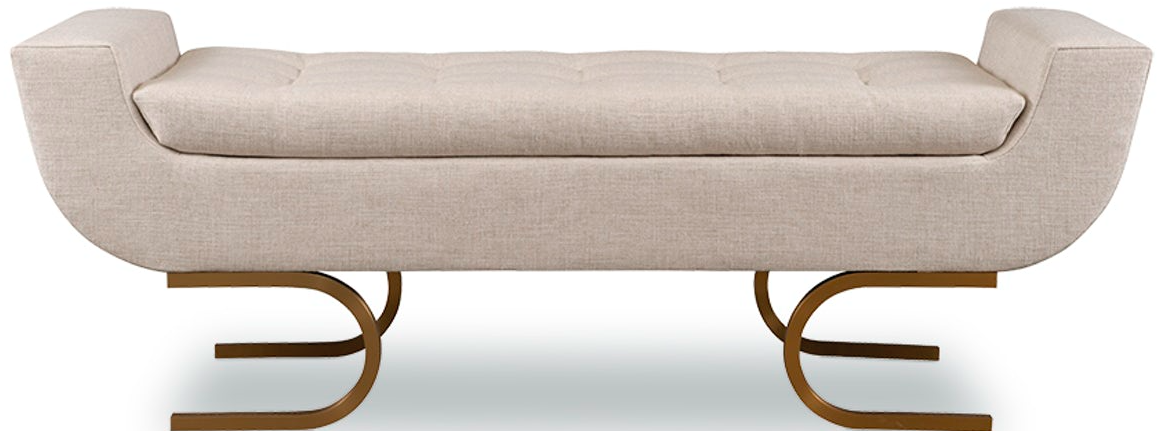 -image Micheal Berman - kravet-
-image Micheal Berman - kravet-
Another category coming into its own, which has been the bane of the designer's existence, is what Deb refers to as “motion furniture,” better known as the recliner. “There's some really interesting motorization and tech things coming out with motion furniture and they don't look like the typical motion furniture or home theater. They're big and boxy and have a sleeker European or Italian look to them. It's a category that's going to take off for designers.”
As a trend strategist, Deb travels the world to develop design intelligence and interior forecasts and has design focused travel planned next year to Paris, New York, London, Provence, Portugal and The Netherlands. Deb says she finds that consumer driven mega trends are fairly universal, though adapted in different ways to different cultures.
“Health and wellness, maximalism, design exploration, self-care, technology, identity, personalization and privacy…all those issues facing everybody…that's the universal aspect of it. We do see when we travel to these trade shows abroad that they are a bit more forward and takes some time to come to the US and be translated into the mainstream, but that time cycle is definitely compressing,” she says.
Deb says next year will bring additional sustainable and green design components. “The materials, the technology, all of that is moving so fast, and we have to adapt to that as designers. Our clients are seeing it in everyday life, and they want instant gratification. They're looking at brands based on transparent supply chains and where the source is coming from.”
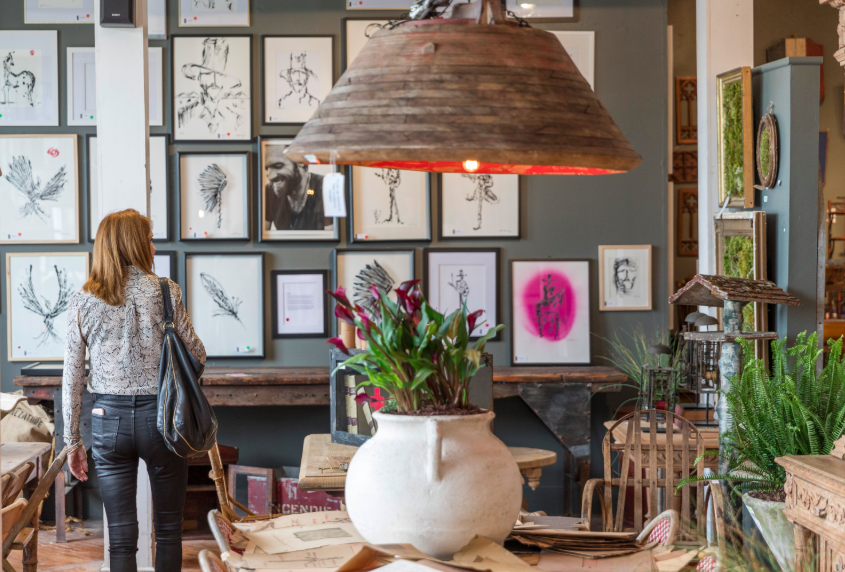
Designers are now becoming editors and curators,
telling a story in a design narrative to sell the product, she says. “The client wants an experience, no matter what that means to them, and we have to define what that is. So that's where telling the story, the process, the authenticity of the artistry…all those things play into green and sustainability and recyclable and upcycling.”
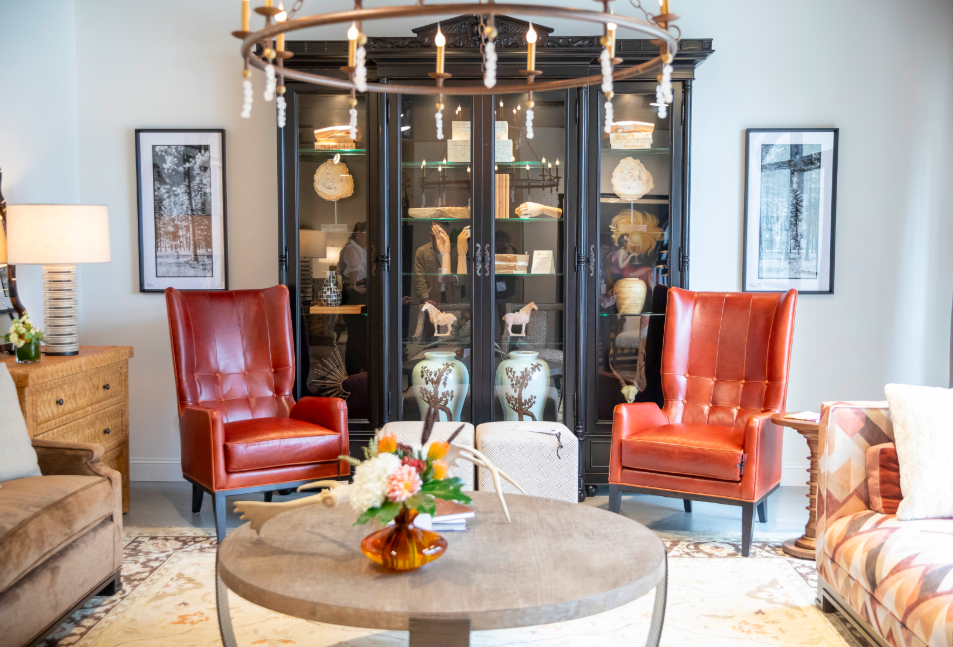
-image Wesley Hall High Point Market-
Color trends at play at High Point were warmer jewel tones, says Deb. “Not so much about individual colors as it was about color palettes and color schemes, whether they were interesting and certainly that they fell on the warmer side of the color wheel.” Those colors were then were combined with bold patterning, also trending, and layers.
“The counterpoint was upholstery in a champagne, gold, almost bridalesque, with some slight shimmer in the fabric. I think the next move from rose gold, which was one of the hot metallics for a long time.”
Blush is still around, as are soft pinks, as evidenced in a couple significant launches, such as the line by super model Miranda Kerr for Universal Furniture and Ben Moore's new color, First Light, basically a softer blush version of millennial pink, she says..
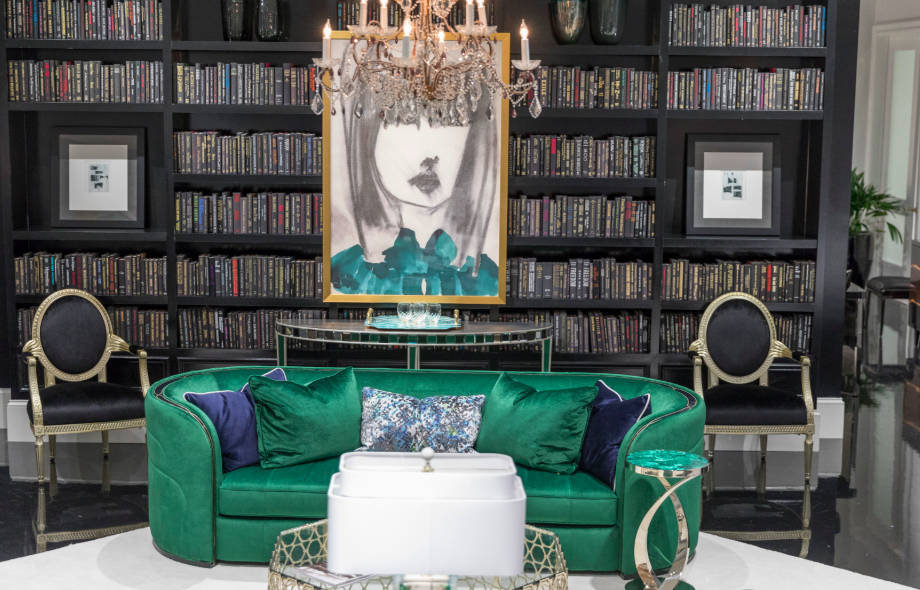
“Black and white as a color palette was strong, mixed sometimes with pops, so black and white, black and gold, that timeless, high-contrast, dramatic combo. Greens were everywhere, from bright greens to more olivey, khaki, almost army greens. Gray, not so much. We're forecasting brown and camel are going to have big upswings in 2020. Animal prints were always there, not only in fabrics, but lighting, upholstery, rugs, sculptural shapes.”
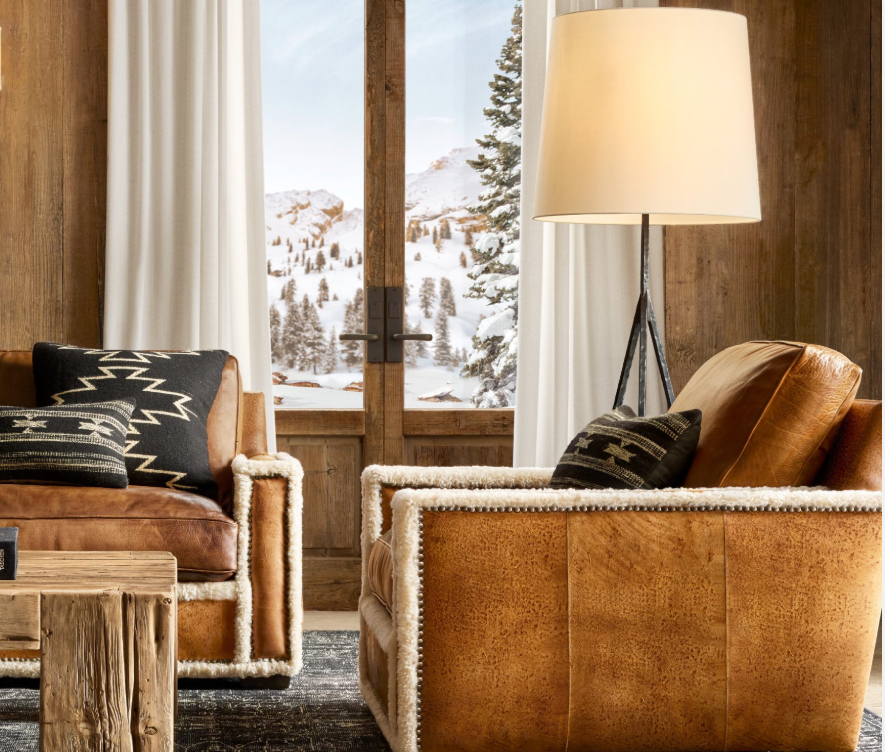
-image Restoration Hardware-
Deb saw a lot of cozy materials―faux fur, sheepskin, chunky textured sweater knit, the looped boucle, called teddy bear fabric in fashion. “Everyone had a chair done in that look,” she says, also noting finishes in the warmer walnut, some blonde, marble, mother of pearl. “And a lot of terrazzo looks, which we saw a year and a half ago in Europe and now we're beginning to see it in High Point.”
Last but not least in the market report, performance fabrics are gaining strength, and Deb anticipates seeing more entrance in competition in 2020, driven by both voids in the marketplace and customer demand for function and great looks, including mid-weights and drapery weights. “It's part of this whole smart home, technical textiles, health and wellness culture.
That's what's driving it.”
For more information on décor tours with Deb Barrett, 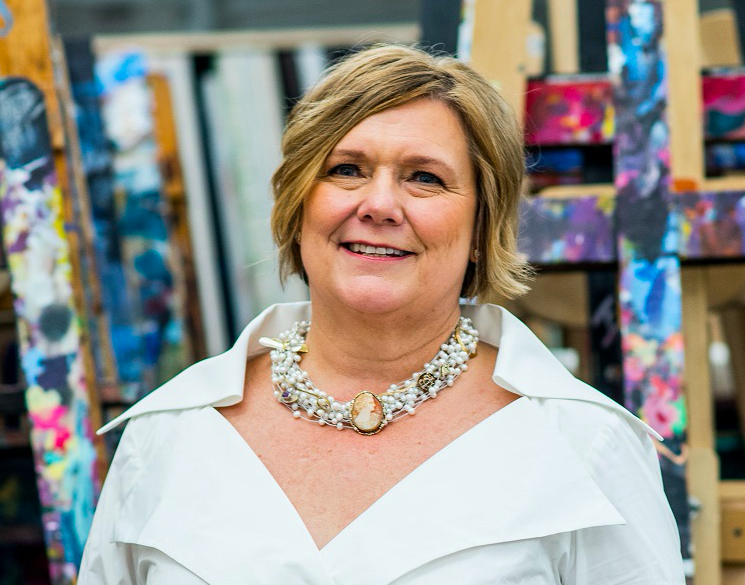
visit debbarrett.com/2020-tours .
One of Deb's favorite quotes!
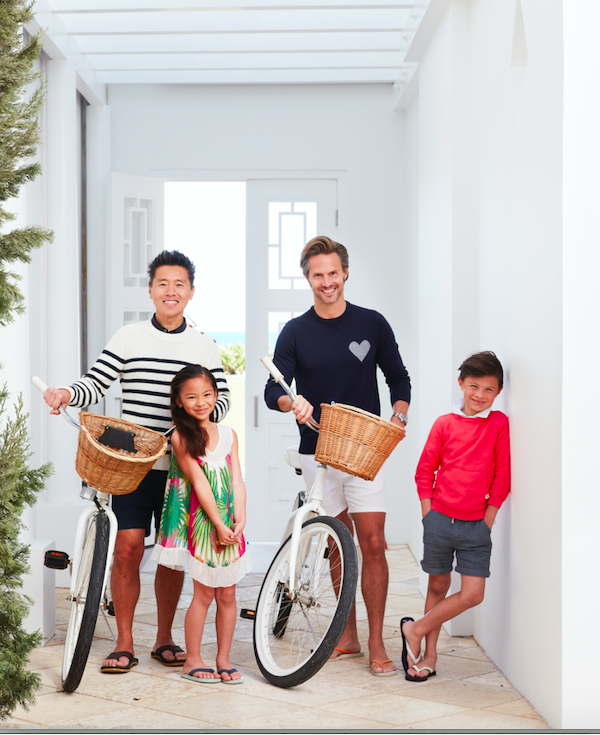
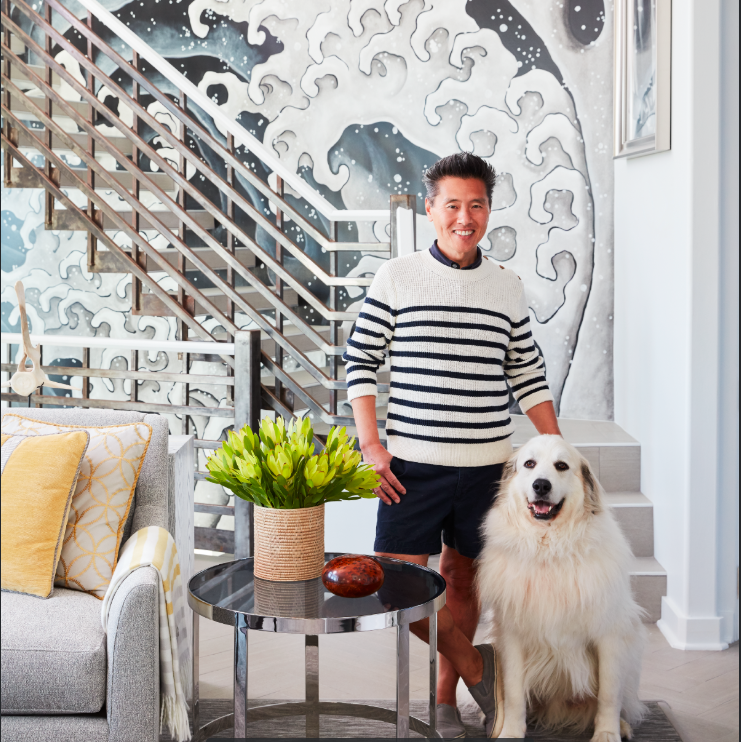
“One thing I always say to designers is that we all have gifts that we bring to the table and it's not about you emulating someone else; it's about celebrating what makes you special, what makes you unique and letting that be an advantage for you when you work with clients.”
